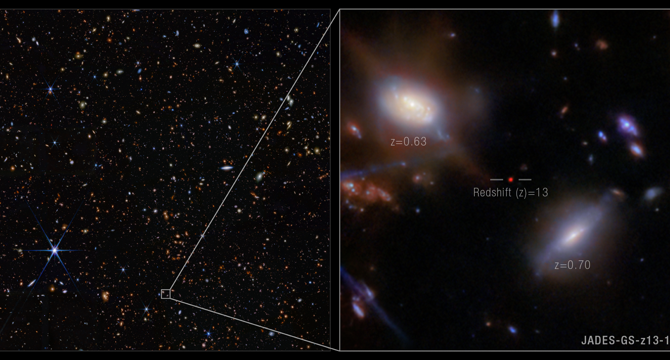Nasa
7d
394

Image Credit: Nasa
NASA’s Webb Sees Galaxy Mysteriously Clearing Fog of Early Universe
- NASA's James Webb Space Telescope has detected a distant galaxy, JADES-GS-z13-1, just 330 million years after the big bang, showing bright hydrogen emission challenging theories about the early universe.
- Researchers used Webb's NIRCam to estimate the galaxy's redshift as 13.0, indicating its extreme distance and age in the universe.
- The galaxy's Lyman-alpha emission was unexpectedly clear, suggesting the surrounding hydrogen fog had been lifted, contrary to prior understanding.
- This finding challenges the notion of a dense neutral hydrogen fog blocking light emissions from early galaxies during the reionization period.
- The source of the Lyman-alpha radiation remains unknown, possibly being the first light from the earliest stars or an active galactic nucleus.
- The discovery was published in the journal Nature, emphasizing the implications for our understanding of the early universe.
- The James Webb Space Telescope, an international effort led by NASA, ESA, and CSA, continues to unveil mysteries in our solar system and beyond.
- The unexpected findings shed light on the early universe's evolution and the formation of galaxies, providing new insights into cosmic history.
- Webb's unique infrared sensitivity allowed for the detection of this incredibly distant galaxy, offering valuable data for astronomers.
- The galaxy's bright hydrogen emission challenges existing models of early universe development and provides a glimpse into the mysteries of cosmic reionization.
Read Full Article
23 Likes
For uninterrupted reading, download the app